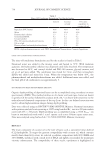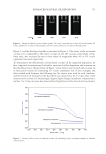Figure 1. Swelling profiles of African virgin and damaged hairs. 747 INFLUENCE OF ETHNICITY AND DAMAGE LEVELS
748 JOURNAL OF COSMETIC SCIENCE This case, gamma undecalactone showed better retention for the three studied ethnicities. In the case of sulfurol, straightening followed by bleaching contributed the most to its decay during hair drying, exhibiting the highest values of relative difference among all ethnicities. The high observed substantivity of sulfurol on hair in this experiment can be explained by its distribution over the surfactant system used as vehicle (a shampoo formulation). In general, highly polar molecules, such as sulfurol, present greater affinity for the polar external phase of the surfactant system than for the internal one, thereby exhibiting a higher impact on the shampoo odor than the more nonpolar molecules, which are probably located inside the micelles (15,16). The molecules present in the external phase of the formulation may also tend to favorably interact with the substrate rather than the more nonpolar FRMs. Another fact that corroborates this explanation is that the substantivities of sulfurol on hair, mainly on wet hair, can be correlated well with the swelling results observed for the different damage groups. The greater the swelling observed, the greater the sulfurol substantivity was. An exception was the straightened and bleached hair, which showed the highest values of swelling but lowest values of substantivity for sulfurol among the damage groups (Table VI). The substantivity of sulfurol on straightened and bleached hair was influenced by its polarity but also by the damage extent of these hair fibers, which led to decreased hydrophobicity, increased porosity, increased permeability, and, consequently, increased exchange with the external environment. In this scenario, substances with high polarity, such as sulfurol, may be easily dragged by water in and out of the fiber, resulting in the smallest substantivities for sulfurol on T24 h. Among the damage groups, straightened hair presented the highest substantivity values on hair (mainly wet) for almost all the FRMs and ethnicities. We associated this behavior with the intermediate level of damage observed in this damage group. Although it also presented decreased hydrophobicity, charged sites, and increased permeability, these alterations occurred at a lower intensity when compared with the hair that was straightened Figure 2. SEM images of hair fiber from different ethnicities and damage groups (magnification: ×2,000).
Purchased for the exclusive use of nofirst nolast (unknown) From: SCC Media Library & Resource Center (library.scconline.org)






































































































































